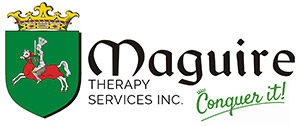One of the most important times that you could seek physical therapy is when you are facing surgical correction of a joint or muscle. Physical therapy is proven time and time again to help with preparing the body for surgical correction, as well as enhancing the recovery process, making it possible to return to full strength as quickly as possible following your surgical procedure.
Meeting with a physical therapist for the first time shouldn’t wait until after your surgical date, however. Pre-operative physical therapy is demonstrated to be just as valuable as postoperative physical therapy. If you are facing a surgical procedure, it may be a good idea to consult with your surgeon about your options for physical therapy.
Preoperative Physical Therapy
Pre-surgical rehabilitation with physical therapy is designed to help the body recover as much strength as possible in the area surrounded the surgical site, so as to enhance the body’s ability to recover following your surgical procedure. During preoperative physical therapy, the physical therapist will work with you to improve strength and functionality in the areas immediately surrounding the targeted injury site. This process can help immensely with the recovery process following surgical care.
Pre-surgical rehab with physical therapy often incorporates:
- Muscle training
- Stretching and mobility training
- Massage
- Hot and cold therapy
Postoperative Physical Therapy
The sooner you may begin physical therapy following surgical correction, the greater the impact physical therapy can have on your recovery. It is typically recommended that you discuss your physical therapy options with your surgeon and physical therapist prior to surgery so that you can set up your first postoperative care as soon as possible following your surgical date.
Physical therapy will typically begin soon after the surgical procedure, once the wound of the surgical site has healed and your body is ready to begin healing the actual torn tissue or damaged joint. Left to recover without physical therapy, the corrected tissues, tendons, and muscles will recover stiffly, with scar tissue interfering with your range of motion and atrophy limiting the amount of comfort and strength at the surgical site.
Post-surgical rehabilitation with physical therapy can help to:
- Reduce the recovery period
- Return strength to pre-injury levels
- Alleviate pain
Following surgery, your physical therapy program will be customized to your personal needs. In the first consultation with your physical therapist you will discuss the severity of the injury, the details of your surgical procedure, and your physical therapist will assess your range of motion and level of strength.
Therapies will then be customized to your needs. Most commonly, therapeutic techniques employed will include a combination of massage therapy, hot and cold therapy, range of motion / mobility training, and guided stretching and muscle training. Your physical therapist will also provide you with guidance for exercises that you should do at home, which will further help to improve your recovery process.
The recovery process is incredibly important following surgical repair. As soon as you find out about your surgical plans, contact your physical therapist and let them know what’s ahead. Make a plan for pre- and post-surgical care that will help you to experience the greatest recovery possible.


